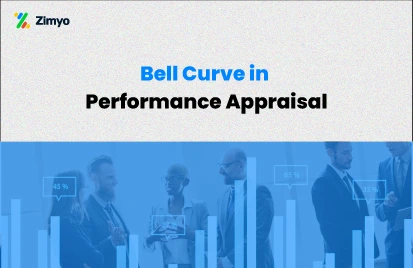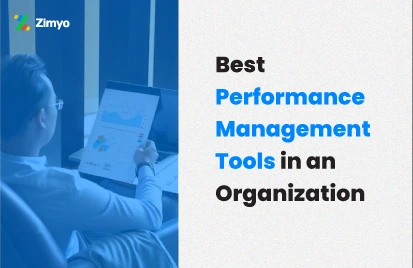Today, the traditional methods of performance management are no longer relevant as they don’t meet the requirements of millennial workers. The new generation of employees is no longer interested in filling out lengthy appraisal forms or attending appraisal meetings that happen once a year.
According to Mercer’s last Global Performance Management update in 2019, only 2% of respondents feel that their performance management process delivered exceptional value to the business. This signals the inefficiency of current performance review methods that companies utilize to evaluate the performance of their employees.
This is why it is crucial for organizations to move from outdated methods of performance management to modern performance management tools or techniques. Unlike traditional performance processes that foster employee disengagement, a performance management system facilitates improved engagement, performance, and productivity.
Advantages of using technology in performance management
A robust performance management system (PMS) is the need of the hour as it helps you get a thorough understanding of competency levels, skills gaps, and training requirements throughout your organization.
Instead of focusing on assessing past performance, the new methods of performance management prompt employees to stay focused on future goals. Holding one-on-one meetings, providing continuous feedback, and opportunities to evolve can have a positive impact on employee engagement.
Technology-enabled performance management offers numerous benefits to an organization and some of them are as follows:

Easy access to real-time information
When it comes to performance reviews, it is important for managers to have a strong understanding of how their direct reports perform. This enables them to give better advice or feedback to them. Remembering the specific details about an employee’s performance isn’t possible manually. This is why real-time feedback is important. Access to real-time data enables managers to address negative feedback before it becomes a serious issue. Also, if the employee is performing well, the real-time information makes it easier for managers to appreciate his/her efforts in no time.
Transparent performance monitoring
One problem with manual performance reviews is that it lacks transparency. According to the ‘Findings of Deloitte’s 2019 State of inclusion report’, sixty-eight percent of respondents reported that bias had a negative effect on their productivity. However, this issue can be resolved by opting for a performance management system that keeps track of the performance of each employee in the organization. This will root out bias in performance reviews, thus creating a culture that is supported by trust and transparency.
Continuous Performance Monitoring
From efficiently managing their teams to attending back-to-back meetings, managers often have a lot on their plates. This makes it difficult for them to keep track of the goals they have set for every year or quarter. However, when you use performance management software you can keep a tab on your team members’ performance with consistent goal and project updates. In a fast-paced business environment, setting and reviewing company priorities on at least a quarterly basis helps keep everyone focused on what matters most to the business.
Generate comprehensive reports
Performance management technology makes it a lot easier for HR managers to generate and present comprehensive reports to senior executives and the board of directors. The performance dashboards present complex information in a simplified manner. It makes it easy to assess the performance of multiple employees at one glance. Besides, if an employee claims that he/she has been unfairly assessed, then the previous reports or stored performance data can help resolve the issue and make things clear.
Besides, leveraging the benefits of HR tech in performance evaluation, there are some other ways that can help you redefine your performance management process. Some of them are as follows:
Set SMART goals
Here SMART stands for specific, measurable, attainable, realistic, and time-bound goals. Setting SMART goals can help employees to prioritize the tasks that hold more value. This also enables them to submit important work assignments or projects on time. Efficient goal setting and tracking help employees develop new skills which help them grow in their career.
Align employee goals with business goals
Aligning employee goals with business goals is one of the major things that businesses need to focus on while discussing performance evaluation plans. It is imperative for the employees to be in alignment with the organizations’ goals. OKR is one model which is gaining a lot of attention. It allows managers to keep track of progress and encourage engagement around measurable goals.
Implementing the 360-degree feedback process
You can improve your overall performance appraisal process by collecting performance information from multiple sources. Taking feedback from other employees, departments, or teams not only helps in a fair and transparent performance evaluation but also boosts employee morale.

Go beyond Performance Appraisals
Not all employees want compensation modifications as the end result of performance reviews. As people leaders, you need to set your vocation goals, sort out the learning and improvement needs and comprehend the potential and basic abilities. This creates a sense of fairness among employees and significantly boosts job satisfaction.
Using the 9 Box-Matrix
9-box matrix helps you analyze both employee’s performance and potential. It allows managers to know which employee is moving in the right direction and which one is lagging behind. A 9-box matrix allows managers to view relevant performance data at a glance. This helps you spot the top, average, and poor performers of your organization.
Use of bell curve analysis
If you are not familiar with the term, let me tell you what it means. It is a performance evaluation method that allows companies to plan employee benefits, spot career growth opportunities, and evaluate attrition and recruiting needs. Today, a lot of organizations have adopted this method for evaluating employee performance.
Conclusion
The performance management process should be simple and efficient and must add value to your organization. All this can be facilitated with the use of a performance management system. The use of HR tech can reduce manual efforts, errors, eliminate manager bias, and boost employee satisfaction.
Modern performance management is indeed a fruitful approach, however, it can be a little overwhelming. With so many options out there, organizations are finding it difficult to choose the right system for their employees.
For the past months, we are also getting a lot of customized requirements from a lot of small and medium scale industries- wanting to improve their company culture by leveraging the benefits of a technology-driven performance management system. And we are happy to say that with the help of our dedicated and experienced team, we’ve successfully catered to the needs of hundreds of organizations by creating custom performance strategies that best suit their needs.




